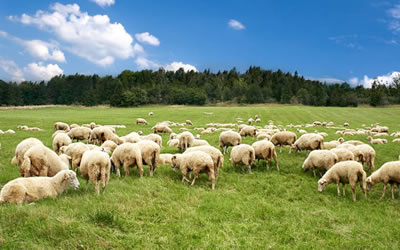- Australian Meat Processors and Butchers are passionate about delivering top quality, safe and nutritious products to the market.
- The Australian Meat Processing sector is a world leader in processing beef, lamb and goat meat and processing plants employ the latest technologies to ensure superior levels of meat product.
- Australia has approximately 300 abattoirs (including boning rooms) with a workforce of around 34,000 people. The red meat processing industry is estimated to contribute just under $23 billion of value adding to the Australian economy. It includes flow-on impacts equivalent to 1.5 percent of Australia’s Gross industry through value adding and by generating 134,000 jobs equivalent to 1.4 percent of full-time equivalent (FTE) employment when flow-on effects are taken into account.
- The meat processing sector provides career opportunities in a range of areas including stock handling, slaughter floors, boning rooms, meat inspection, packing rooms, mechanics, fork lift driving, operating equipment, data entry, finance, administration, and human resources.
- Staff at meat processing plants are trained in animal welfare, husbandry and handling, so that the safety and comfort of the livestock is maintained.
- Red Meat Processors trim and prepare the beef, sheep and goat carcases to specific standards. They grade the carcasses for colour, tenderness, fat, age, sex and bruising according to AUS-MEAT standards and weigh and brand each carcase. The weight is used to calculate how much farmers are paid.
- Meat Processors who work in abattoirs include Trimmers, Boners, Graders and Packers. A ‘Trimmer’ skins, cleans, trims, dresses, hangs and prepares the beef, lamb or goat carcasses to specific standards. Each carcass is cut in half and carefully chilled in the chiller room. The chiller room keeps the meat at the correct temperature to ensure the red meat is tender and fresh.
- After chilling, meat ‘Graders’, grade the beef, lamb and goat meat for colour, tenderness, fat, age, sex and any bruising on the meat. Each carcass is tagged by the ‘Graders’ to show the classification, the date of processing and the brand of meat, as well as the plant in which it was processed.
- After chilling for at least 24 hours, the ‘Boners’ cut the beef, lamb and goat meat into different cuts of meat or prepare the carcasses to be sent to a butcher who will prepare the smaller cuts of meat. Meat ‘Packers’ pack the varying cuts of beef, lamb and goat meat ready for sale and delivery to local, regional, interstate and overseas customers.
- Red meat products are transported from the processing plant to butchers, wholesalers, restaurants and supermarkets, in refrigerated trucks. There are Australian Standards that must be followed during transportation to make sure that the red meat is kept hygienic for people to eat.
- Red meat for export markets is packed into large refrigerated containers and delivered to ports and airports for transport overseas. Stringent food safety standards are applied by the Quality Assurance teams to ensure the meat is hygienic to eat by consumers in Australia and overseas.
- Australian meat processing plants also employ people in environmental monitoring, animal welfare, equipment maintenance, truck dispatching, cleaning, quality assurance, finance, procurement, office administration and human resource management.
A number of other industries also provide services to the Australian meat processing industry. These include the:
- Meat and livestock industry (farmers and primary producers)
- Transport industry
- Warehousing and distribution industry
- Animal feed industry
- Veterinary industry
- Graphic design industry
- Packaging industry, and
- Engineering industry.
When a meat processor exports product overseas, a number of other industry sectors and their staff also provide services, including:
- Health Inspectors
- Road Transporters
- Rail Transporters
- Aviation Transporters
- Warehousing and Logistics
- Procurement Officers
- Transport Recording and Dispatch Clerks
- Shipping Clerks
- Truck Dispatchers
- Container Loading Clerks
- Distribution Clerks
- Stevedores
- Export Clerks
- Freight Forwarders
- Custom Clearance Officers
- E-Logistics Officers, and
- Supply and Distribution Managers.
Source: Heilbron, S.G. 2016. Evaluating the Socio-economic benefit of the red meat processing industry in regional Australia, pages 14 and 20.









